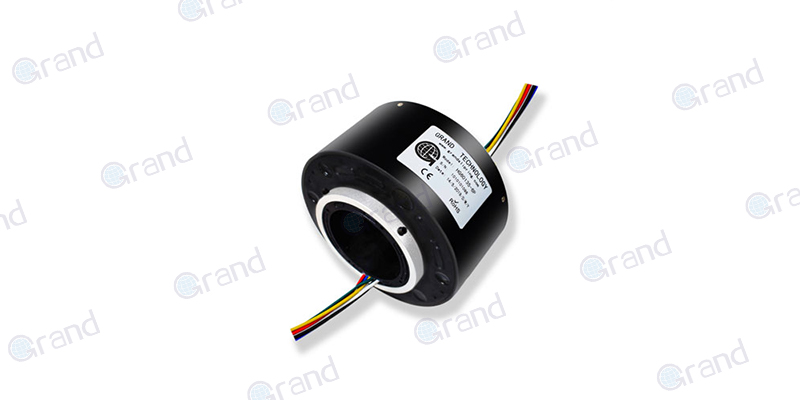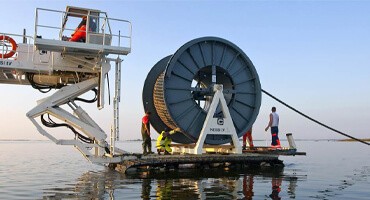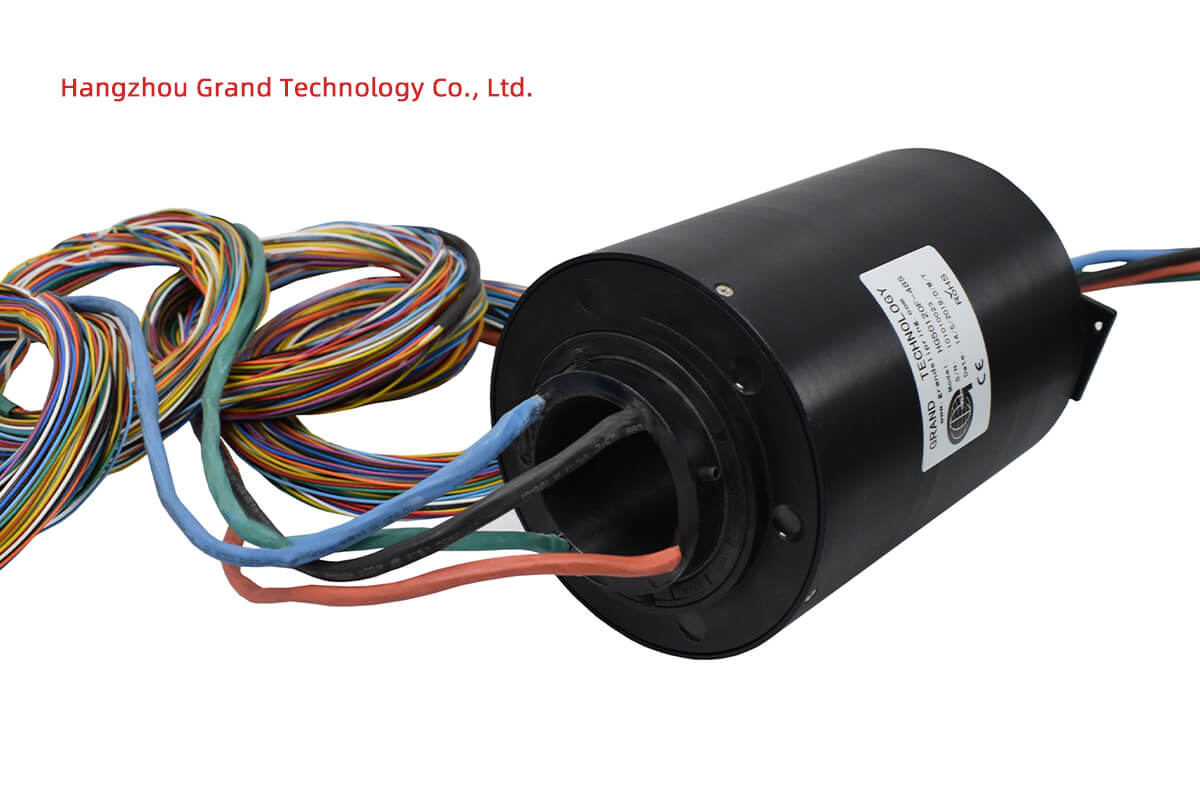In the ever-advancing realms of engineering and technology, numerous components work intricately behind the scenes to facilitate efficient operations. Among these, the slip ring shaft, despite often being overlooked, plays a pivotal role. This article aims to bring this crucial component into the spotlight, delving into its unique features, varied applications, and immense significance across industries.
We will journey from understanding the basic concept of a slip ring shaft, and its working principles, to exploring its real-life applications. Along the path, we address user concerns, highlight its advantages, and discuss inherent challenges. Emphasizing the essentiality of regular maintenance, we explore the future trends concerning this component. Join us as we unravel the mysteries of the slip ring shaft, a silent yet powerful enabler of technological progress.
What is a Slip Ring Shaft?
A slip ring shaft, a seemingly mundane yet fundamentally crucial player in the world of engineering, operates as a bridge in systems requiring uninterrupted connectivity between stationary and rotating parts. Acting as a rotary electrical interface, it ensures the transmission of power and electrical signals with negligible interruption, keeping the system’s rotational functionality intact. Its operation might seem simple, but on a more profound exploration, one would appreciate its outstanding contribution to maintaining system efficiency in several critical applications.
The shaft slip ring is typically formed of two key components – the ring and the brushes. The ring, usually made of a conductive metal, is attached to the rotating part of the system. As the name suggests, it slips or spins in a circular motion around the shaft. Simultaneously, the brushes – made of metal or graphite and held against the ring with a spring – slide on the ring’s surface as it spins. This synergy between the brushes maintaining constant electrical contact with the rotating ring allows for the transmission of power or signal from stationary parts to rotating parts and vice versa.
The seamless operation of the slip ring shaft and the unerring connectivity it provides are central to its purpose. Though seemingly inconspicuous, these components fit together to form a critical cog in the wheel of any system necessitating rotational motion. As an essential mediator between static and dynamic components, the slip ring shaft’s role in modern machinery cannot be understated.

Working Principle of the Slip Ring Shaft
Unraveling the working principle of the slip ring shaft draws us into a fascinating domain of friction, contact, and electrical transmission. At its core, its operation involves the crucial interaction between the rings and the brushes, and the continuous contact this system maintains, even when one component is stationary while the other rotates.
As the system kicks into action, the brushes slide on the rotating ring’s outer surface, duly bearing against it under pressure from a spring. The electric current or signal is then fed through the brushes and successfully transmitted into the rotating ring through the point of contact between the two. Contrarily, it can operate vice versa – the electric current can be sent through the ring and picked up by the brushes. All in all, the slip ring shaft’s central working principle involves flawless uninterrupted transmission of power and data through rotation and the simple yet effective concept of contact and friction.
We understand that different applications bear different requirements, leading to the development of diverse types of slip ring shafts. For instance, in a capsule slip ring, the circuits are housed in a disc-shaped capsule, making it suitable for space-restricted applications. We also have mercury-wetted slip rings that ensure lesser friction and wear of components but may be less environmentally friendly. Yet another variant, the pancake slip ring, is characterized by its flat design where conductive rings are arranged one over another instead of a circular configuration. Each modification caters to a distinctive set of requirements, demonstrating the versatility of the slip ring shaft.
Be it varied design adaptability or the overarching principle of electrical transmission via rotation, the effective workings of the slip ring shaft undoubtedly contribute to its increasing prominence in an array of contemporary mechanical systems.
Applications of Slip Ring Shaft
The slip ring shaft’s ability to facilitate continuous electrical transmission amidst rotation cements its indispensable role across myriad applications. Industrially, militarily, and commercially, its operational framework caters to varying demands, each exhibiting its versatility and effectiveness. The following insights permit a glimpse into the extensive landscape that slip ring shafts have conquered.
Wind turbines: Harnessing renewable energy efficiently necessitates the application of slip ring shafts in wind turbines. Installed in nacelle systems, the slip ring shafts streamline electrical connections between the spinning blades and the stationary generator, allowing for continuous transmission of generated power to the grid.

Radar antennas: Slip ring shafts play a critical role in many radar systems, facilitating flawless signal transmission between the antenna’s rotating and stationary components. This ensures uninterrupted communication, tracking, and navigation capabilities in both civilian and military domains.

Cable reels: Utilized in a diverse array of cable-powered equipment, such as electrical vehicle charging and docking systems, slip ring shafts make it possible to wind and unwind cables without twisting or tangling. The ring-brush mechanism allows the smooth transmission of power and data through the entire process.

Rotating tanks: Industrial tanks, such as large-scale chemical reactors and paint mixers that require constant agitation, frequently use slip ring shafts to provide reliable transmission of power and control signals. As the tank or mixer rotates, slip ring shafts ensure seamless electrical connections and function.

Robotics and automation: Robotic arms and automated systems that involve rotational movements often rely on slip ring shafts to maintain electrical connectivity. Their successful integration across these emerging industries demonstrates their adaptability and brings about significant advancements in productivity and efficiency.

The slip ring shafts prove their versatility and effectiveness in various environments where maintaining electrical contact is crucial during rotation. Their ability to cater to the specific needs of each industry truly sets them apart. This vital component has become a linchpin in modern technology, infusing resilience and agility into today’s advanced mechanical systems.
Advantages of Using Slip Ring Shafts
The integration of slip ring shafts into various mechanical systems spans across industries, and for good reason. These compact assemblies offer numerous advantages that are not only beneficial but often critical to the overall functioning of many applications. This section of the discussion will elaborate on the potency and advantages they offer, substantiating their widespread preference.
Uninterrupted Power and Signal Transmission: The principal advantage of using a slip ring shaft lies in its ability to provide uninterrupted power and signal transmission amidst rotation. This feature makes slip ring shafts indispensable in systems like wind turbines, radar antennas, and revolving tanks – all rely extensively on a continuous flow of power or signals for their operational success.
Reduced System Wear: Slip ring shafts assist in reducing wear and tear in systems that involve rotation. By facilitating the smooth transfer of power and data without the need for physical disconnection or reconnection, they can contribute to an increased overall lifespan for such systems.
Efficient Data Transfer: In our increasingly digital world, the efficient transfer of not just power, but data, is often crucial. Slip ring shafts help to ensure that this data transfer can occur without interruption, even in systems involving complex rotational movements. This is seen in technological advancements such as radar systems and robotics.
Simplification of System design: By providing a rotating electrical interface, slip ring shafts significantly simplify the design of numerous mechanical systems. They effectively eliminate the need for cables that have to swivel around joints or detach and reattach, thereby simplifying operations and reducing the propensity for hitches.
Versatility: Slip ring shafts’ compatibility with a wide variety of systems across myriad sectors underscores their versatility. Be it varying system speeds, environments, or power requirements, the slip ring shaft can be designed to meet the specific needs of its application.
The manifold advantages offered by slip ring shafts render them an essential backbone for many industries. Their diverse applications and significant contributions to system efficacy underscore the importance of these humble yet powerful components in today’s technological landscape.
Challenges and Limitations of Slip Ring Shafts
Despite the numerous advantages that slip ring shafts bestow, it is crucial to note they’re not devoid of limitations. These challenges, when unaddressed, might impede on the overall efficacy of the system they’re implemented in. Let’s weave into this narrative some of the pressing challenges and constraints associated with slip ring shafts.
Maintenance and Wear: One significant limitation stemming from the very nature of slip ring shafts is maintenance. The brush and ring system creates friction during rotation; this wear and tear will eventually lead to performance degradation and the need for replacement parts over time, inviting added expenditure and system downtime.
Environmental Constraints: Slip ring shafts perform optimally in clean environments free of dust and other corrosives. Exposure to dirt, moisture, and unwarranted elements can disrupt the contact between the brushes and rings, hindering the seamless transmission of power or signals.
Lifespan: The lifespan of slip ring shafts is contingent on their operating conditions. Despite being designed for continuous, long-term use, these components will eventually succumb to wear, the rate of which will increase in harsher environments or under higher loads, shrinking their overall operational lifespan.
Limited Speed: Given the physical nature of contact and friction, slip ring shafts have limitations in terms of rotational speed. At extremely high speeds, the constancy of brush-ring engagement may be compromised, leading to interrupted signal transmission.
Noise and Interference: In systems requiring precise signal transmission, the electrical noise caused by brush contact can become an issue. This can potentially induce signal interference, compromising the accuracy of the output.
Despite these challenges, slip ring shafts continue to be integral across numerous domains by virtue of their essential functionality. It is the emphasis on continuous innovation and design principles that has facilitated their longevity in diverse applications, even as we are mindful of their inherent limitations.
User concerns Regarding Slip Ring Shafts
We live in a world driven increasingly by technology, calling for iterative improvements and adaptations to existing tools and systems. Specifically, slip ring shafts amidst their versatility, must address certain valid concerns posed by users.
Durability: Durability tops the user concerns given the friction-based operation of slip ring shafts. Continuous rotation, and the consequent wear and tear between brush and ring, often lead users to question their long-term durability.
Efficiency: The function of electrification and signal transfer amidst continuous rotation reaffirms the need for elevated efficiency. Users typically question the degradation in performance over time and under varying environmental and directional conditions.
Costs: Considering both upfront costs and those associated with maintenance and possible part replacements, the financial investment is a major user concern.
Customizability: Given the wide range of applications, users often express worry about whether slip ring shafts can be customized to fit their unique requirements, be it significant torques, high speeds, or specific sizes and shapes.
To address these concerns:
Durability: While brushes and rings do wear over time, advances in material science and engineering have led to longer-lasting, more durable components. Choosing slip ring shafts made with high-quality materials and designed for purpose-specific needs enhances durability.
Efficiency: Though efficiency might moderately wane over time due to wear, selecting high-quality components and providing regular maintenance helps maintain optimal performance. And though some signal noise is inevitable, it’s often low enough not to interfere with system performance.
Costs: While the upfront cost of acquiring a slip ring shaft and potential maintenance costs might seem high, their longevity, especially when appropriately groomed, can offer cost benefits in the long term by reducing system downtime and part replacement.
Customizability: Modern manufacturers offer a vast range of slip ring shafts tailored to specific industry needs. This makes it increasingly likely for users to find a ring shaft that suits their unique requirements.
The concerns around slip ring shafts are undeniably valid, and they enforce the necessity for continuous improvements and innovations in this field. The positive aspects offered by these components, such as operational continuity and design simplification, however, greatly outweigh these concerns.
Slip Ring Shaft: Importance of Proper Maintenance and Care
Irrespective of how technologically advanced or well-engineered a machine component is, its longevity and efficiency are inherently tied to routine maintenance and conscientious care. This sentiment surfaced repeatedly in our exploration of slip ring shafts, reflecting an indisputable stance. Let’s delve deeper into how this plays out.
Regular Maintenance: Slip ring shafts, due to their direct brush-and-ring contact, demand routine maintenance for optimal performance. This maintenance typically includes dust cleaning to reduce abrasion and ensure good contact, brush inspections for timely replacements, and overall monitoring of system performance. Regularly lubricating the contact surface, where appropriate, can also reduce friction and wear, thereby extending the slip ring shaft’s life.
Quality Assurance: Apart from maintaining the slip ring shaft itself, it’s essential to check the quality and functionality of connected components. Electrical connectors, cables, housing – these are all components that need to function flawlessly to ensure the unhindered performance of a slip ring shaft. Hence, a complete check-up of the whole system should be conducted along with the maintenance of the slip rings.
Professional Services: While routine cleaning and inspection could be performed by users, it’s strongly suggested to engage professional services for intricate tasks such as brush replacement or internal inspections. Professionals are equipped to diagnose and remedy potential issues that might not be apparent or fixable to the untrained eye.
Preventive Measures and Damage Control: If any abnormal noise, temperature rise, or drop in system efficiency is noted, it’s advisable to stop usage immediately and contact an expert. This preventive measure can save expensive and extensive repair work down the line.
Proper care and timely attention inevitably amplify the longevity and functionality of slip ring shafts. Optimal maintenance not only promises the sustained performance of the shafts but also eliminates the proportion of unpredicted interruptions, thereby affirming the resilience of the entire system.
The Future Trend of Slip Ring Shaft
As integral components in a plethora of mechanical systems, slip ring shafts hold a significant position in many industries. The constant evolution of technology provides a continuously evolving backdrop for these components, making it fascinating to muse over their future trends and enhancements.
Material Advancements: Material science is unfolding new horizons rapidly, and slip ring shafts will potentially benefit from these advancements. The use of superconductive materials to reduce friction and improve conductivity could greatly enhance the lifespan and efficiency of these components, addressing some of the most pressing user concerns.
Seamless Integration with Digital Technology: In line with the age of digital transformation, we could see slip rings becoming more integrated with digital technology. Enhanced encoders, efficient data processing, and better signal transmission technology could revolutionize how slip ring shafts perform and interact with the rest of the system.
Innovations to Reduce Maintenance: As manufacturers continue to explore strategies to extend the durability and efficiency of slip ring shafts, preventive and self-maintenance solutions may grow more commonplace. These could take the form of intricately designed brushes that wear out less easily, or built-in monitoring systems providing real-time wear-and-tear data.
Sustainable Practices: Increasing environmental consciousness may spearhead the adoption of more sustainable processes in manufacturing slip ring shafts. This endeavor could involve sourcing eco-friendly materials or optimizing production methods to minimize environmental impact.
Customization and Adaptation: Addressing diverse industrial needs will continue driving the trend towards highly customized slip ring shaft offerings. The focus will extend beyond just size and shape customization, but also to achieving maximal efficiency under highly specific loads and environmental requirements.
The future of slip ring shafts is poised to be exciting, with advancements in technology and changing industry needs driving innovation. A focus on improving existing limitations and catering to specialized requirements will shape this path, promising greater efficiency and user satisfaction across applications.
Conclusion
In conclusion, slip ring shafts, with their unique function and comprehensive application scope, have and continue to be instrumental in various industries. Though user concerns exist, their value in facilitating smooth, efficient operations can’t be understated. As innovation marches on, we look forward to enhanced versions of these crucial components to meet the demands of our evolving technological landscape.
See What We Can Do

